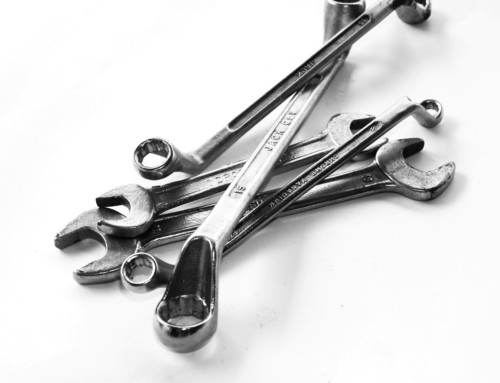Using a Kaizen Approach to Improve Your Storeroom

game plan
No storeroom is perfect, well at least of those I have seen. The process of improving is never ending. A common term for this process of continuous improvement is Kaizen. The Kaizen activity is often seen on the plant floor, either the form of a blitz, in which a tremendous amount of resources are thrown at an issue or an area. The other is a systematic approach, in which a small amount of improvement is achieved each day.
These same approaches can be used in the storeroom to either fine tune the storeroom and its spare parts process, or to address a major issue. Deciding which one to use depends entirely on the situation and available resources. Regardless which approach is used, there are a few primary areas which are always ready for Kaizen.
Optimize Material Flow
Rarely thought of, the flow of material in a plant can dramatically add time to the entire spare parts management process. Whether the time and distance to storeroom or in the storeroom, it all adds up to non value added activities in by the technicians and the storeroom staff.
- Reducing travel time can be accomplished by reducing the distance from the receiving dock to the storeroom, from the storeroom to the shop and any other distance the parts must travel.
- Organizing parts by class and by the frequency used in the storeroom may not seem like it will return a lot of time, but imagine that the bearings are located in the back of the storeroom. If the sites use 2-3 bearings a day, that could add up to 6 minutes a day of unnecessary travel and that is only one material class. Imagine how much time you could save your technicians or storeroom staff in a week.
- Use of satellite storerooms enables a huge improvement in the elimination of travel time and distance. By locating key spare parts strategically around the site, the MTTR can be reduced, along with travel time.
These types of activities are best accomplished through the use of a Kaizen event, as moving spares and potentially storerooms require resources and effort.
Optimize Information Flow
Information is often a key issue in the operation of the storeroom and the ability of the storeroom to integrate with the work management process. By having a streamlined, simple information flow time wasted looking for information and coordinating activities can be reduced.
- Parts Kitting often fails due to the lack of information and communication. By optimizing the flow of information and establishing a clear line of communication, part kitting can be implemented successfully, dramatically improving the wrench time of the technicians.
- Delivery information is often discussed during the daily maintenance meeting. By establishing an easy to access a report of parts on order with delivery information, many unnecessary conversations and confusion can be eliminated.
- The ordering process can be painful at best in some organizations. Make sure the entire process is documented and adhered to. Once this is in place, a service level agreement can be established with the purchasing group to ensure all requisitions are actioned quickly.
This types of improvements are more suited to the type of Kaizen where a little bit is improved each day.
Optimize Stock Holdings
The level of stock held by an organization is often a significant amount. The goal is not to eliminate the stock holdings, but to optimize it and free up cash flow without adding risk to the business.
- Min / Max and re-order quantities are often not set using proven formulas, but instead on intuition. Even if established using formulas, they are not often updated when pricing, lead time and usage history change. By reviewing a small number of SKUs each week, an organization can be assured that the Min / Max and re-order quantities are correct. This will reduce the amount of excess, active stock.
- Leveraged Spend is a great opportunity to reduce the cost of spare parts. By knowing what you are buying over the course of a year and across a region, preferred pricing can be negotiated and secured. This is typically a major event and is not something that can be accomplished a little at a time.
- Consignment / VMI is another opportunity to reduce the stocking costs of spares. By leveraging vendors, spares can be held on site at the vendor’s cost. The parts are purchased as they are consumed. This improvement is typically something that is setup in a major activity and then improved over time.
Improving the cash flow of a business can make a major difference in any organization. By optimizing the stocking levels and cost using large events and small efforts every day, a significant value can be a return to the business.
Muda – Eliminate the Waste in the Storeroom
In addition to optimizing the storeroom through Kaizen, there is often an opportunity to eliminate waste. This is known as Muda. There is avoidable waste in the storeroom
- Obsolesces is a major issue in storerooms, with as much as 30% of spares being disposed of due to obsolete. This can be addressed by continually evaluating the stocking levels. In addition, by implementing a gatekeeping process, unnecessary parts will not be stocked.
- Damage is another form of waste found in the storeroom. This damage occurs from mishandling, mis-storing or from lack of preventive maintenance. Yes, preventive maintenance in a storeroom is required. Start by establishing storage requirements for sensitive parts and PM routines for large motors, gearboxes, and any other parts prone to failure
By optimizing the storeroom and it’s processed, there can be a tremendous return to the organization. the improvements do not always have to happen at once. Start small and work to make sustainable improvements. By reviewing the 15 Min / Max points per day, a single site was able to reduce excess stock levels by $400,000 in a single year. This is a great example of Kaizen at it’s best.
Do you have an improvement process in your organization? What’s stopping you from making small sustainable improvements in your storeroom? There is always room for improvements.
Remember, to find success, you must first solve the problem, then achieve the implementation of the solution, and finally sustain winning results.
I’m James Kovacevic
Eruditio, LLC
Where Education Meets Application
Follow @EruditioLLC

